Our team have chosen the best science books for kids to read this year. Head outside for some family foraging with the help of Alys Fowler and Heidi Griffiths' new book or get gruesome facts to fascinate your gore-obsessed teens from Erika Engelhaupt's weird science adventures.
For more great content, come join us over for lunchtime genius. You’ll get free samples of new and popular books, plus reading recommendations and all the latest science news sent directly to your inbox. Just sign up to the Science Focus Newsletter.
If these books make you want to dust off the safety glasses and don your lab coat, try these easy indoor food experiments or find out how to help your children learn to code. OR how about our ultimate round-up of the best science books in 2025.
The best science books for kids to read in 2025
Tell Me About… Plants
Emily Dodd

If your child is just starting to read, then they'll love this colourful book by CBeebies writer Emily Dodd, which introduces them to the world of plants. Along with a basic introduction to plant biology, they'll also learn dozens of bite-sized facts, like that some plants are taller than skyscrapers, and some smell like poo!
Tell Me About… Human Body
Emily Dodd

Also by Emily Dodd, this science book shines a light on the intricacies of the human body. Young readers will learn how their heart pumps blood, how the nerves work, what the immune system does, and much more. The last few pages cover feelings, emotions and how you can keep your body happy – a really nice touch.
Unlocking The Universe
Stephen Hawking and Lucy Hawking
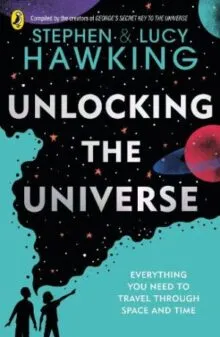
If your child is looking to learn about a wide range of scientific topics, this book will be a great introduction. Unlocking the universe is a range of essays, facts and interesting images on ideas ranging from the moon, to vaccines and even travel through space and time.
Despite its heavy topics, the book deals with these ideas in a way that children can easily understand.
A Really Short History Of Nearly Everything
Bill Bryson
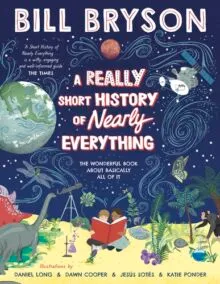
A lot has happened in history, but if you have a child that wants to learn about... well, everything, this will be the book for them.
It covers the dawn of dinosaurs, modern-day mysteries and everything in-between. Despite its aim at children, it is a book that adults will get pleasure from too.
On The Origin Of Species
Sabina Radeva

On the origin of species was Charles Darwin's famous novel depicting his theories on evolution. His original text is maybe slightly too heavy for a child to get into, which is why graphic designer and molecular biologist Sabina Radeva have recast the story, using illustrations and a simplified text.
I Am A Book. I Am A Portal To The Universe
Miriam Quick and Stefanie Posavec
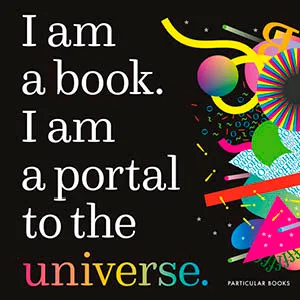
The winner of the 2021 Royal Society Young People’s Books Prize has been selected by children and has been announced as I Am a Book. I Am a Portal to the Universeby Miriam Quick and Stefanie Posavec.
Big numbers, great graphics, mind-blowing facts and a healthy dose of interactivity, this book is a lot of fun. You’ll find answers to questions you never knew you needed, including, How long is an anteater's tongue? How tiny is the DNA in your cells? How fast is gold mined? How loud is the sun? And how many stars have been born and exploded in the time you've taken to read this sentence?
On winning the competition, scientist and lecturerDr Andrew Juppsaid: "I was looking for books that were particularly engaging or presented science in a new way. This book encouraged the reader to touch certain parts of the page to transfer bacteria, balance it on their head, and drop the book from a height – the interactivity of this book is what science is all about!"
Kid Innovators
Robin Stevenson and Allison Steinfeld
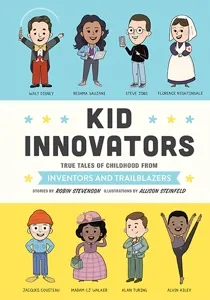
Every parent thinks their kid is going to change the world, but what can we learn from the formative years of those who really did?
From Florence Nightingale and the Wright brothers to Bill Gates and Elon Musk, this imaginative, inspiring book tells the childhood stories of innovators of all kinds. Each mini biography comes with colourful illustrations and interesting factoids about game-changers in science, entertainment, business and technology. Worried your child is a daydreamer? Don’t be. Alan Turing was exactly the same.
KEW: Grow, Forage And Make
Alys Fowler and Heidi Griffiths
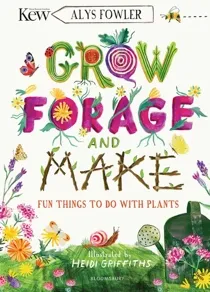
Lockdown gave us all a new appreciation of the outdoors and, for many parents, forced us to come up with inventive ways to keep young people engaged and entertained. This new fieldbook from Kew Gardens is packed with fun ideas for small green fingers.
From foraging edible flowers and roots to growing neon beetroots in the dark, there’s an emphasis on discovery and mud-splattered practicality with lots of things to make, grow and find – indoors and outdoors.
Fourteen Wolves
Catherine Barr and Jenni Desmond
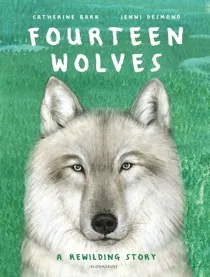
This is an evocative story about rewilding, designed to capture imaginations young and old, as well as give us all a refreshed appreciation of nature. The book tells the story of the wolves of Yellowstone Park. They disappeared in the 1930s and their absence had far-reaching consequences for the local ecosystem, with the fortunes of many species tied up with that of the pack.
It took until 1995 for wolves to be reintroduced to Yellowstone, and this wonderfully illustrated book tells the amazing story of what happened next.
Diary Of A Young Naturalist
Dara McAnulty
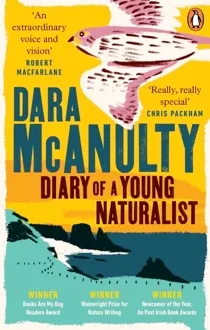
One of the most warmly received books in any genre from recent years gets a paperback release this month. Diary of a Young Naturalist chronicles the life of author Dara McAnulty, a nature-obsessed environmental campaigner who finds peace in observing, recording and understanding the wildlife and landscapes he encounters.
McAnulty is autistic and his book, often described as a blend of nature book and coming-of-age memoir, charts a tumultuous period of his life. His relationship with the environment is one of solace, and a reminder to us all of the healing power of the natural world.
Where The Wild Things Grow
David Hamilton
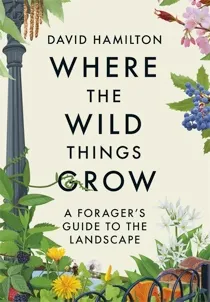
Part how-to guide, part love letter to the ecosystems on our doorsteps, this book reveals the food hidden in plain sight that most of us have the chance to forage. From wild mushrooms and berries to the weeds that grow in our gardens, David Hamilton draws on his own extensive experience to explain what’s out there and where to find it. Along the way, he also illuminates the science and history of wild foods and explains how to use them in recipes.
Gory Details: Adventures From the Dark Side of Science
Erika Engelhaupt

Based on a blog from National Geographic, this collection of scientific snapshots explores the weird, the gross and the funny. In other words, it’s great for young minds who want to impress their friends with something outrageous (but informative).
The book covers everything from bee stings to blood spatter at crime scenes – so it’s probably one for teens rather than tots – and never skimps on the juicy, biological or anatomical details. Often illuminating unreported areas of science, there’s plenty for parents here, too.
More great science books for children and teens
None of the above suit your kids' interests?
Try these brilliant books for science lovers and nature enthusiasts. There's something here for all ages!
What To Look For In Spring
Elizabeth Jenner
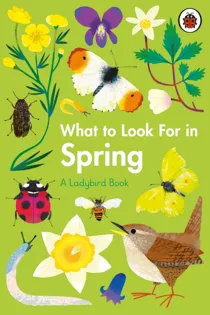
We might be in the chilliest months of the year right now, but soon the natural world will start waking up from its winter slumber to burst into life once more. This beautifully illustrated, pocket-sized book guides young readers through the wonders of nature that can be witnessed during spring, including meteor showers, boxing hares and bleating lambs.
Ladybird’s original series of What To Look For books was published in the 1960s, and this modern, child-friendly update is sure to appeal to the new generation of readers.
Marie Curie And Her Daughters
Imogen and Isabel Greenberg
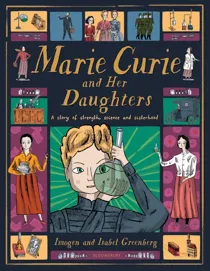
Many of us are familiar with Marie Curie, the brilliant scientist who made game-changing discoveries in the field of chemistry. Yet perhaps less well known are her two daughters, Irène and Ève, who grew up to be just as passionate and independent as their mum. Irène became a great scientist, while Eve was a journalist, war correspondent and humanitarian, who later worked for UNICEF.
This gorgeously illustrated book tells the remarkable story of Marie, Irène and Ève, as they travel the world, save lives during WWI and WWII and win Nobel Prizes.
Made For Each Other
Joanna McInerney and Georgina Taylor

Sometimes it pays to have a trusted friend close by. In nature, teamwork can make the difference between surviving another day or becoming someone else’s lunch.
This stunning book, illustrated by debut artist Georgina Taylor, takes us on a tour through some of the most intriguing partnerships in the wild world. Whether they help each other to ward off predators, remove parasites, reproduce or feed, the organisms featured in this book have learnt how to work together to successfully co-exist.
What’s The Weather?
Fraser and Judith Ralston

At a time when extreme weather is becoming more common, it makes sense to get clued up on the science behind it. This colourful book tells us about clouds, the climate and global warming, reveals how the weather has changed over Earth’s entire history, what it could be like in the future, and teaches us how we can predict the weather.
What’s The Weather? is jam-packed with bite-sized facts and cute illustrations that reveal intriguing titbits of information, such as the different names for snowflake structures and how lightning storms form. A great one for learning at home.
The Awesome Power Of Sleep
Nicola Morgan

Teenagers today have to struggle with excessive amounts of screentime, pressure from social media, school stress, late nights, and worries about friendships. It’s no wonder they aren’t getting enough sleep! Nicola Morgan, an expert on the adolescent brain, explores the importance of sleep for teenage health, wellbeing and development, and reveals why a good night’s rest is so crucial.
With plenty of scientific evidence conveyed in an accessible and authoritative way, this helpful guide is a fascinating read for both teenagers and adults alike.
30-Second series
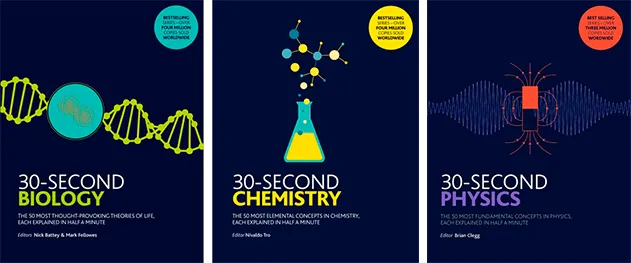
A great series of books for revision, there are books on GCSE topics such as biology, chemistry and physics, but also specific titles including the study of genetics, the writings of Shakespeare and the science of Earth's weather. Condensing each topic into 50 fundamental facts, these short books make learning straightforward and (dare we say it) interesting!
Also in the series are books aimed at adults, so if you fancy getting a better understanding of topics like opera, politics or fashion, check them out.
How Science Works
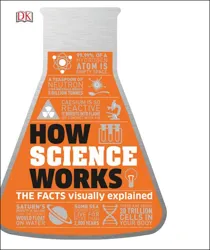
Although this book is primarily aimed at adults, it is full to brimming with easy to understand diagrams, illustrations and infographics that will spark the imagination of anyone that picks it up, young or old.
Teens cramming for an exam will love the fact that every page is dedicated to a specific part of science (think the quantum world, machines, special relativity or the carbon cycle), while for the rest of us this is probably the best science book if you need a quick refresher.
I Want to be... Series
Becky Davies, illustrated by Richard Merritt
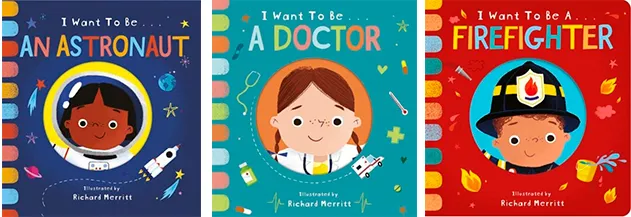
These books for babies and toddlers make the perfect introduction to people's jobs and what their daily life is like. Share stories of what an astronaut might do out in space, or explain what your role as a doctor involves. Where is that firetruck going? I Want to be a Firefighter can help answer your little one's questions.
SQUIRREL_13074668
Turn and Learn: Our World
Isabel Otter, illustrated by Hannah Tolson

If you've been watching Sir David Attenborough's new series as a family, why not explore more of the Earth with this interactive book for young readers? You'll meet the people who live in the Arctic, the creatures that live in the desert, and see the world from a new perspective through Hannah Tolson's detailed illustrations.
By the same author and illustrator is Turn and Learn: Weather, to help you explain how rain and the Sun, thunder and snow, come to be outside our windows.
Stop that Virus!
Illustrated by Susanna Rumiz
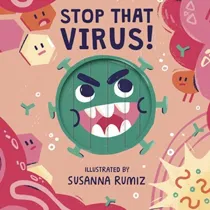
The coronavirus pandemic has brought up conversations that many of us didn't expect, and children may have asked questions that you might not know how to answer. Stop that Virus! explains how a team of cells within your body helps attack an intruder. What is the human body's immune system, and what do antibodies do to stop the enemy?
The book doesn't go into the role of personal hygiene in immunology, so it's important to also talk about hand-washing and how that can Stop that Virus!
The Weird Maths series
David Darling and Agnijo Banerjee

Mathematics is weird.
Teenage maths whizz Agnijo Banerjee, and his tutor and science writer David Darling, fill the pages of three books with exotic and unusual facts about maths, including God's Number (the smallest number of moves it takes to solve a Rubik's cube) and the reigning role of Pi in just about everything.
SQUIRREL_13073600
Wish We Knew What to Say: Talking with Children About Race
Dr Pragya Agarwal

From a data and behavioural scientist, this book gives parents the confidence to answer their children’s questions about race and racism. It includes questions, resources and suggestions for scenarios that could start these tricky conversations, written with delicacy and authority.
This isn’t just for parents, though – it’s aimed at anyone who has young people in their life and wants to support the education of the next generation.
Nodding Off: The Science of Sleep from Cradle to Grave
Alice Gregory
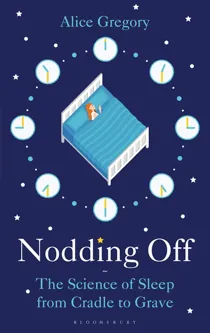
Offering parents an insight into their children's, and their own, sleep patterns, sleep psychologist Professor Alice Gregory brings science and self-help together in this guide to getting a good night's rest. Thoroughly researched with interviews and statistics, this book is essential reading for all – whether you get 4 or 40 winks a night.
Ocean
Hélène Druvert and Emmanuelle Grundmann

This fantastic title from Hélène Druvert for children aged 7-11 explains the most fascinating facets of the sea, including waves, coral reefs and the food chain. With captivating fold-out infographics and stunning laser-cut illustrations, it’s a beautiful, interactive tome that’ll help both kids and adults appreciate our oceans.
Is There Anybody Out There?
Dara Ó Briain
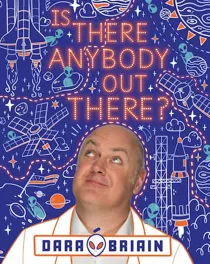
The hilarious Dara Ó Briain offers scientific answers to questions such as: how did life begin? How was the Earth created? Do aliens exist? in this illustrated book for 9+ years.
- Listen to our podcast with Dara Ó Briain
Encyclopedia Prehistorica of Sharks and Other Sea Monsters: The Definitive Pop-Up
Matthew Reinhart and Robert Sabuda

These often-forgotten prehistoric monsters once ruled the seas, and they are no less menacing in their pop-up paper form. A fight between two sea lizards unfolds between the pages, and the tentacles of ancient squid reach out from the depths of the ocean.
Stunningly crafted and meticulously researched, the Encyclopedia Prehistorica is a book that will be used and admired again and again.
Outdoor Maker Lab
Professor Robert Winston
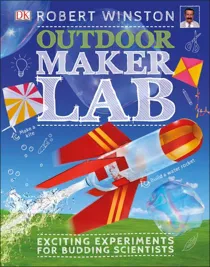
Kids love making things, especially when it involves mess, explosions, and anything that makes you go “wow” (fun fact: so do we). Professor Robert Winston (the scientist with a very fetching moustache that presented the seminal BBC TV show The Human Body) introduces this 160-page book filled with wonderful experiments that are easily made using household items, but show off some seriously fun science.
Kay’s Anatomy: A Complete (and Completely Disgusting) Guide to the Human Body
Adam Kay

From the junior doctor who wrote the best-selling comedic memoir This is Going to Hurt comes a thorough tour through the human body. Answering questions like: What’s in a bogey? Do hideous creatures really live on our eyelashes? How does food become poo?
Kay’s Anatomy is like Horrible Histories but for the human body.
Probably best to have your Christmas dinner before opening presents, if you intend on gifting this…
This Book is Not Rubbish
Isabel Thomas
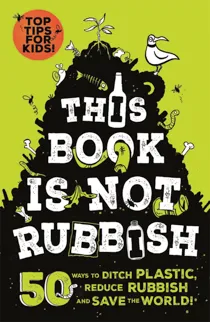
We all know that the grown-ups have messed up and now our planet is struggling. But you can help save it. This book contains 50 everyday ideas, like how to use less water when you do the washing-up, to how to make your next birthday party eco-friendly.
The Lost Words
Robert Macfarlane and Jackie Morris
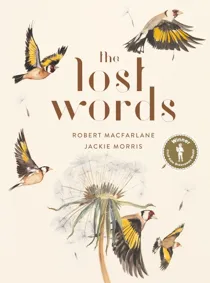
Worried by the way in which natural words (acorn, dandelion, kingfisher, etc) were disappearing from children’s vocabulary, Robert Macfarlane teamed up with illustrator Jackie Morris to produce this exquisite ‘spell book’, combining acrostic poems with hand-painted artwork.
What if?
Randall Munroe
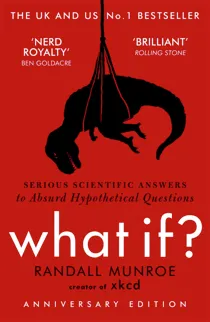
XKCD webcomic creator and former NASA roboticist Randall Munroe addresses questions such as ‘If we all disappeared, how long before the last light went out?’ and ‘Can you warm up a cup of tea just by stirring it?’. It’s like BBC Science Focus’s Q&A section fell down the rabbit hole… but the author’s inquisitive mind is the star.
Why Your Parents Are Driving You Up the Wall and What To Do About It
Dean Burnett
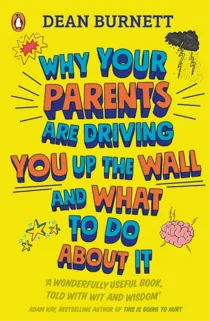
Why are teens so emotional? Why won’t they listen when adults depart their worldly knowledge? Why won’t they tidy their rooms?
Well, there are plenty of parenting books out there that attempt to answer these questions, but neuroscientist Dean Burnett’s book offers teens an insight into their parents’ minds. By giving teenagers the psychology behind why their parents do the things they do, Burnett answers common complaints such as; why is my Dad always dragging me out of bed? Why are my family always so obsessed with asking ‘How was school?’ and more.
The best books of all time
For more great book recommendations, check out these lists:
